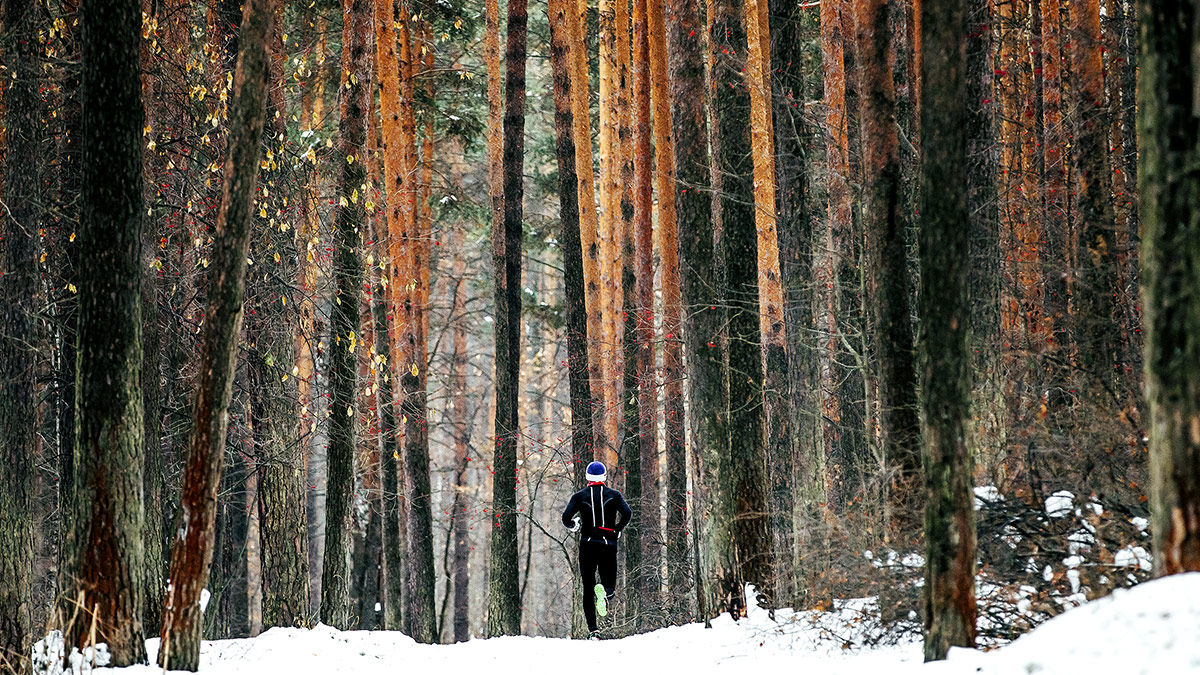The polarized training approach has set a new standard for athletes and coaches. Since a big part of training is done during winter, I’ve outlined several points below to help you tackle your requirements and get you ready for higher-intensity workouts in spring. Use a blend of these ideas to keep your training engaging and build a solid foundation before interval season.
Progressive runs
The athletes I coach have benefited throughout the winter by implementing progressive runs into their weekly schedules. The idea is simple — you begin running at a slow, easy pace, and finish at a fast pace. Starting out slowly not only decreases your risk of injury, but enables your aerobic pathways to work to a greater extent when you reach your faster pace.
There are several variations you can use to structure your program, but I recommend increasing your pace by five seconds per kilometer every five minutes during continuous runs across Joe Friel’s Zone 2 and Zone 3. By training this way, you will find a nice fitness boost without lasting fatigue.
Steady runs
Long slow distance (LSD) training aims at building distance over time, and should always be a significant part of your training plan. The most important aspect is to keep it aerobic, meaning the pace should feel comfortable and you should be able to hold an ongoing conversation with your training partner. Referring to Joe Friel’s pace zones, this intensity corresponds to Zone 2 and is ideal for building endurance.
Incorporating steady runs into your workouts help your body develop the ability to better metabolize fat as your main energy source during prolonged exercise. As your training progresses, you will notice it’s easier to run for longer and even at a faster pace without an increased heart rate. Shorter runs at conversational pace can also be included within a weekly training plan to prepare your muscles and tendons for a proper hill workout or drill session.
Strides
Incorporate these short accelerations to boost your neuromuscular speed. They work best at the end of a steady run when your muscles are warmed up and ready for more load. Aim to reach your 3K to 5K pace in 10 to 20 second intervals. Work on a dynamic push off the ground, straight posture, and strong knee drive.
Hill training
Hill work involves running repetitions on a slope of moderate gradient and at around 85 percent effort for 20 to 40 seconds. The purpose is to build strength and improve running economy. During training, control your intensity by feel while running uphill and check your pace afterward. It should fall into Joe Friel’s Zone 3 if you paced yourself accurately. Always look forward, and avoid leaning forward or dropping your hips. Hill training is ideal before more demanding intervals on a track in spring.
Drills
Drills should be a regular part of a runner’s weekly training program. Whether you are a runner or do a sport involving running, drills are vital. There are many benefits gained from including drills in your activities. They prevent poor running technique and injuries, develop dynamic flexibility, and improve running posture. You should always be mindful of correct movement patterns and executing them properly.
Running ABCs are a good starting point for any drill set. Begin by doing these exercises slowly at walking speed, and add in more dynamic drills once the correct movement has been perfected. It also helps to keep some slow drills in your warm up and cool down to prevent bad habits from getting in the way.


